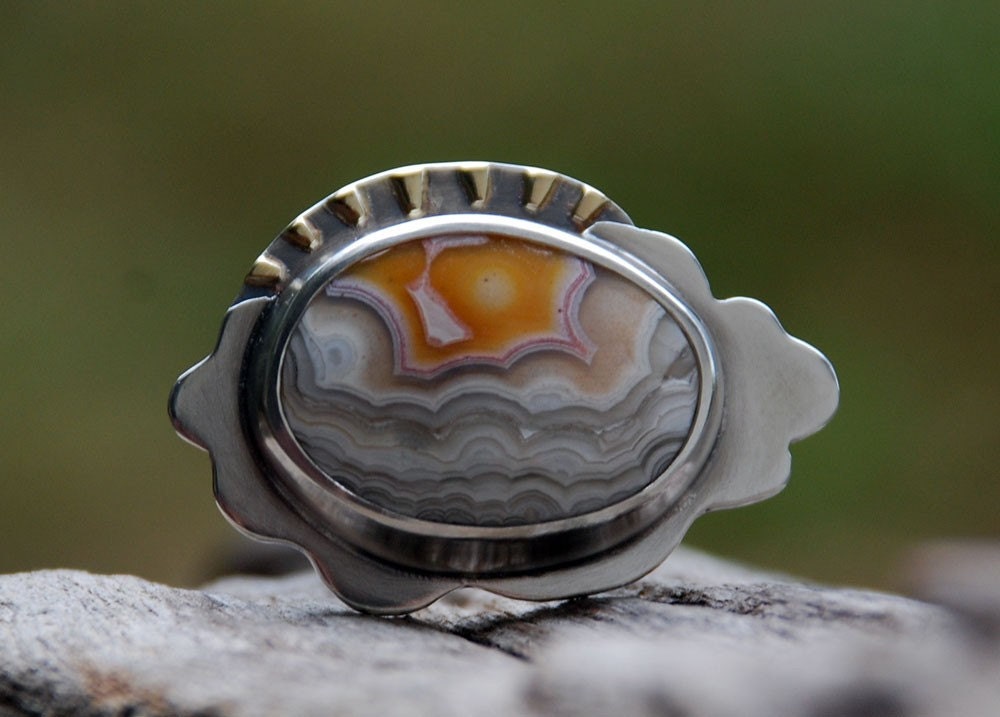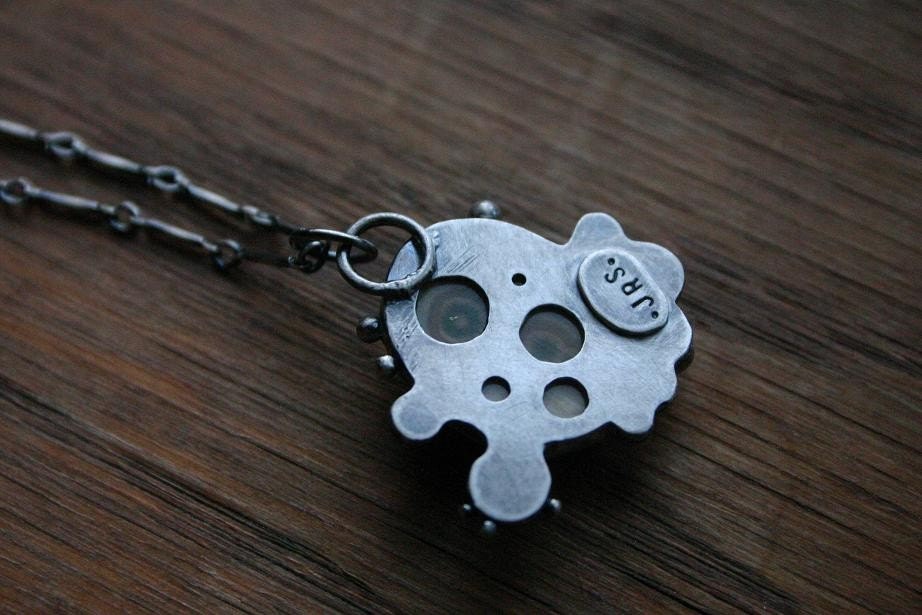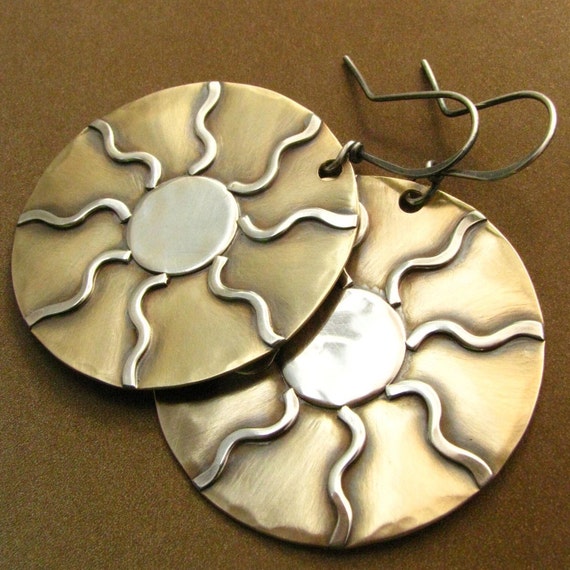Cabochon Stone Set Pendant
Vocabulary -
Bezel setting- a method of securing a stone onto a piece of jewelry. It consists simply of a band of metal wrapped around the stone to hold it in place.
 | |
| Stacey of Wildflower Designs |
 |
Natural Mandalas - iolite and sterling silver ring by Spiralstone Sydney, Australia |
 |
Dawn Light - Crazy Lace Agate Ring by Spiralstone Sydney, Australia |
 |
Tie Strings to Clouds necklace by cholulajewelry Rochester, MN |
 |
Submarine necklace by cholulajewelry Rochester, MN |
Agenda-

Earth, air, fire, & water – the four elements.
Design Problem
Use all four elements in your design for the cabochon stone setting.
Many people are drawn to one particularly, associating certain things with each. In metalsmithing we use all four elements to make the work.
- EARTH – Metal ore comes from the earth, is mined from it’s depths. And of course gemstones are just shined up rocks!
- FIRE – This one’s easy. You need fire to smelt the ore and to then shape the metal. You also use it to fuse or solder pieces together.
- AIR – The torch is an acetylene/air torch, drawing atmospheric air into the gas stream. Also, air helps to cool your pieces sometimes.
- WATER – We use water to “quench” a hot piece of metal. Sometimes this is just to cool it down, other times it’s used in the actual tempering process of the metal (usually steel.)
Below are five videos on how to set a cabochon stone.


















